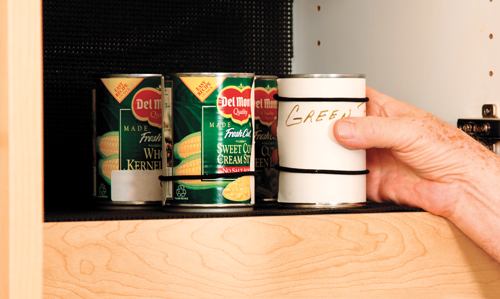By Bill Holton, AccessWorld Correspondent
As someone with a visual impairment, you will be faced with the question “What is this?” many times throughout the day. Often the answer is obvious (a fork); sometimes the answer comes with some comparison (an AA battery versus an AAA battery). Sometimes you can only make a partial identification (you know it's a disk, but you don't know if it's music, video, or your computer's backup disk). And then there are times when the answer is an utter mystery—“My friend sent me a birthday gift, and even with the box open, I still have no idea what it is.”
Along with maintaining independent travel, difficulty with accurately identifying items can be among the most frustrating problems for the newly blind. It can also be annoying, such as when you open a can of spinach when you meant to open a can of chili.
There are any number of low-tech methods that can help you keep things straight, such as putting one rubber band around your shampoo, and two around the bottle of conditioner. Braille labels can help keep your spice rack in order, and arranging your condiments alphabetically in the refrigerator door shelf (catsup, hot sauce, Italian dressing, mayonnaise, mustard, pickles, relish, Russian dressing, etc.) can help you locate the item you want. You can even keep your money sorted by using distinct folding patters for the different denominations in your wallet: the $1 bills are kept flat, the $5s are folded in half vertically, the $10s are folded lengthwise, the $20s are folded in quarters. Of course these and other methods of everyday identification rely on having sighted assistance to help you mark, sort, or stow these items in the first place.
In this guide we will introduce you to several ways technology can help you identify everyday objects.
